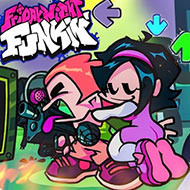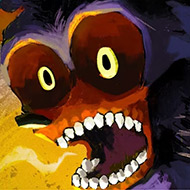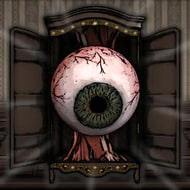

TungTung’s Nightmare is a surreal platform adventure where every dream becomes a distorted challenge. You play as TungTung, a character trapped in his own subconscious, forced to navigate strange worlds built from fear, confusion, and fading memories. Each level is a reflection of his restless mind — shifting platforms, disorienting physics, and bizarre creatures that seem to exist only to confuse him further. The result is a game that feels both puzzling and strangely emotional, inviting players to survive the madness by staying alert and adaptable.
Exploring the Dream World
The world of TungTung’s Nightmare is built from contradictions. Familiar objects twist into impossible forms, and logic rarely applies. To make progress, you must learn to read patterns that seem random at first glance and use them to your advantage.
- Changing Environments: Levels morph mid-game, altering gravity or layout.
- Illogical Hazards: Enemies appear from objects you thought were harmless.
- Hidden Shortcuts: Some routes exist only during brief visual shifts.
- Looping Sections: Certain areas repeat until you solve their hidden trick.
Gameplay and Mechanics
Despite its dreamlike presentation, TungTung’s Nightmare relies on precise platforming and puzzle-solving. You’ll need to time jumps perfectly, react to changing rules, and manage limited stamina. Every failure offers a clue — every success feels like waking up from a brief moment of clarity.
- Reflex-Based Challenges: Jumps, slides, and dodges must be exact.
- Memory Puzzles: Certain patterns require memorization and anticipation.
- Dynamic Gravity: Direction and physics shift unpredictably.
- Environmental Logic: Use moving scenery to trigger hidden doors.
Thematic Depth and Atmosphere
TungTung’s Nightmare doesn’t just present action — it captures the feeling of being lost inside one’s own fears. Visual cues, sound distortions, and light effects all work together to create a sense of unease. The deeper you go, the less certain reality becomes.
- Symbolic Design: Objects represent memories and emotions.
- Sound Manipulation: Audio shifts between soothing and unsettling tones.
- Psychological Progression: Each stage represents a layer of TungTung’s subconscious.
- Minimal Guidance: The game rarely tells you what to do — discovery is the goal.
Why TungTung’s Nightmare Captivates Players
The strength of TungTung’s Nightmare lies in how it merges challenge with surreal storytelling. Every obstacle feels meaningful, every strange event symbolic. It’s not just a test of skill, but a puzzle of perception — an experience that rewards curiosity and persistence equally.
- Emotional Depth: The story unfolds through gameplay, not dialogue.
- Layered Difficulty: New mechanics emerge as the nightmare deepens.
- Abstract Visuals: Color and distortion communicate emotion.
- Endless Interpretation: No single explanation fits every moment.
Ultimately, TungTung’s Nightmare is a journey through confusion, rhythm, and imagination — a game that dares players to make sense of chaos while learning to embrace the strange beauty of their own subconscious fears.



























